#20th c. germany
Text

Poster "Excelsior Pneumatic-Fahrrad-Paar an der Strandpromenade" by Max Schlichting, c. 1900
65 notes
·
View notes
Text
Capri pants
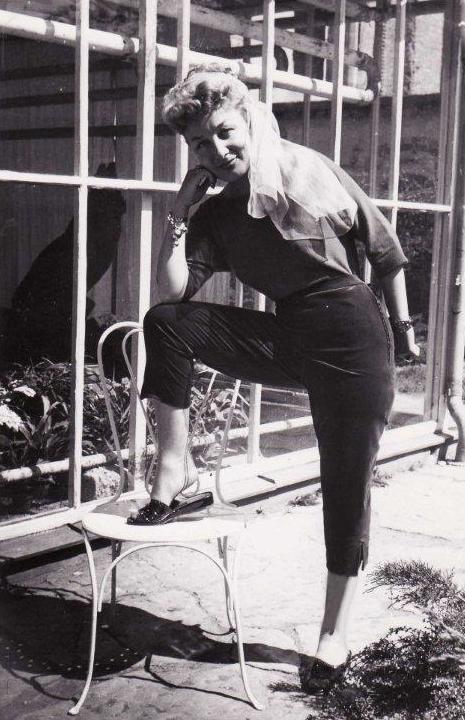
Pants that are longer than shorts, but are not as long as trousers. Capri pants can be a generic term for any cropped slim pants, and also used as a specific term to refer to pants that end on the ankle bone. Capri pants were introduced by German fashion designer Sonja de Lennart in 1948, and were popularized by her and English couturier Bunny Roger. The name of the pants is derived from the isle of Capri, where they rose to popularity in the late 1950s and early 1960s. The actress Audrey Hepburn was among the first movie stars who wore capris, and the pants quickly became synonymous with her classic style.
0 notes
Text
Lovely in Teal and Gold: 20s and 30s Dresses

Woman's evening dress • 1st quarter of the 20th century • Boston Museum of Fine Arts
Made in part from an Indian sari of blue and gold; straight cut; blue satin slip; front of bodice and back, including short train, of sari; skirt of dress and underarm panels of gold lace; worn by Mrs. John D. Rockefeller, Jr.


Left: Chiffon Evening dress • 1920s
Right: Formal dress • c. 1925 • Germany • Embroidery in gold threads and glass beads on crepe georgette and gold lame

Grand Luxe mules • c. 1920 • France • Collection of The Museum at FIT
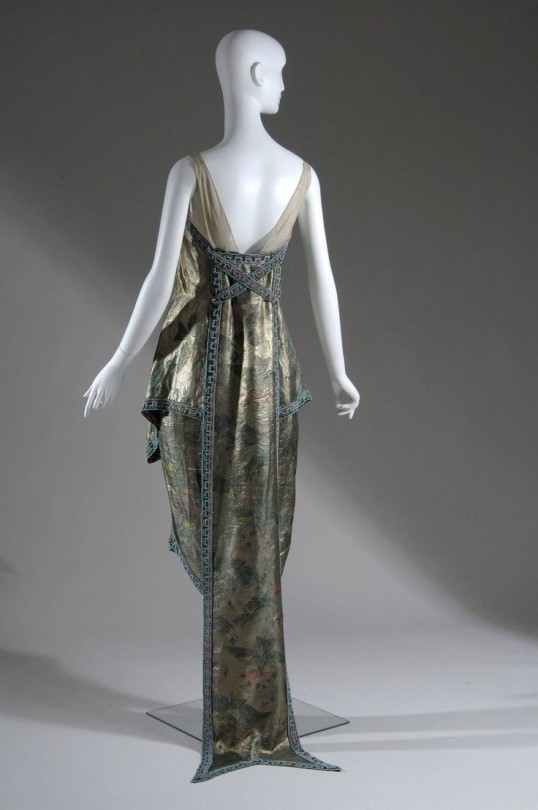
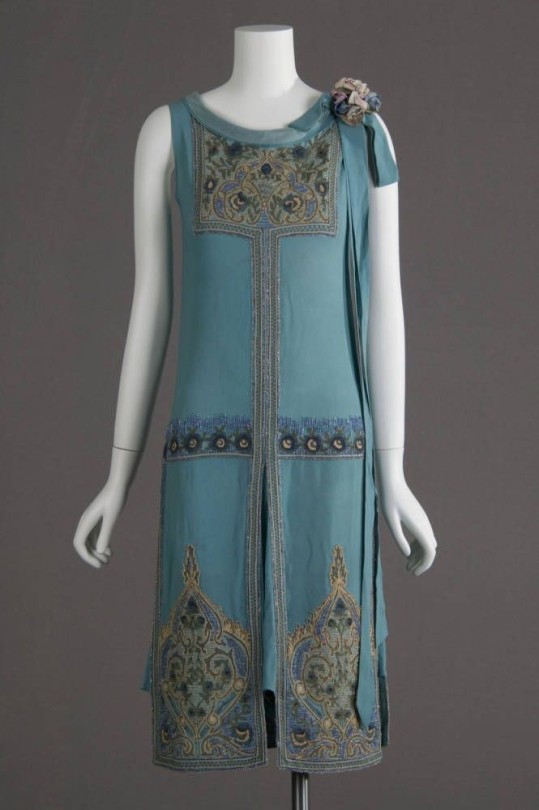
Right: Wedding dress • 1927 • Silk Charmeuse • Chicago History Museum
Left: Callot Soeurs evening gown • France • 1921 • Metallic brocade, pearl and glass beads
#fashion#fashion history#women's fashion#vintage dress design#1920s fashion#20th century fashion#flapper era#roaring 20s dresses#20s evening dresses#20s party dress#20s party shoes#callot soeurs#historical dresses#the resplendent outfit blog
21 notes
·
View notes
Text
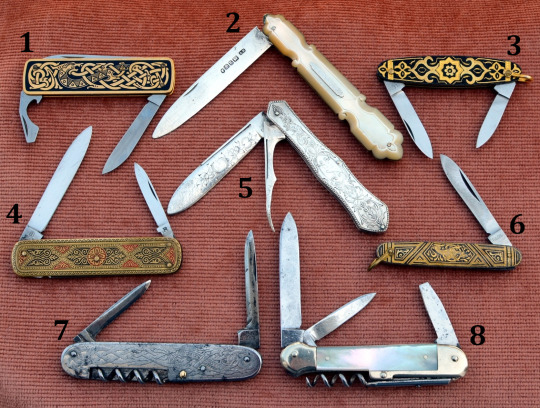
8 Fancy Pocket Knives
Etched pocket knife from Eskilstuna, Sweden
Silver / mother of pearl Victorian fruit knife, England
Damascene Toledo knife, Spain
Inlaid Toledo knife, Germany
Silver-plated fruit knife, USA
Damascene Toledo knife, Spain
Etched pocket knife from Eskilstuna, Sweden
Mother of pearl pocket knife from Eskilstuna, Sweden
@victoriansword [details after the cut]
1) Swedish pocket knife by EKA (Eskilstuna Kniffabriks AB), c. 1980-2000. Model 6 GS (1967-2010), with main blade, bottle opener/screwdriver, pen blade, and nail file. Tang stamp "EKA / SWEDEN" (from 1967), etched handle, 7 cm closed.
These were very popular in the 2nd half of the 20th century as gift knives or advertising knives. They were manufactured by many cutlers in Eskilstuna, and widely exported. The decorative pattern appears, with variations, on Swedish knives from at least the 19th century, and is inspired by Norse / Viking art, which often features twisted serpents/dragons. The interlacing perhaps also borrows from Celtic knots.
2) English fruit knife by Martin Bros & Co, 1848. Silver blade with 4 hallmarks (for Queen Victoria, the year, sterling silver, and Sheffield) and maker's mark, mother of pearl scales, 9.5 cm closed.
This is the posh version of what used to be an incredibly useful tool, a knife (and sometimes a multi-tool knife and fork) for eating on the road. The fancier ones were also status symbols, and very popular gifts – millions of silver fruit knives were manufactured in Britain from the 18th to the 20th century, mostly in Sheffield, Birmingham, and Edinburgh.
3) Spanish Toledo knife, as it's sometimes called, a damascened penknife of recent manufacture. Two pen blades, tang stamp "TOLEDO", 6.7 cm closed.
Not to be confused with Damascus blades! The handle is damascened – decorated with gold inlaid into oxidized steel (see here for details). Reminder that gold is a highly ductile metal (you can stretch it real thin before it breaks), so that impressive aesthetic result comes from a tiny amount of gold. It's a cheap knife, is what I'm saying, for tourists basically.
4) German pocket knife, confusingly also called Toledo, by Hartkopf. With main blade, pen blade and nail file. Brass handle inlaid with oxidised steel. Tang stamp "Hartkopf&Co / Solingen", 8cm closed.
It's "damascened" in the broad sense of inlaying, hence the name "Toledo": it supposedly emulates the Spanish style, and perhaps pretends to be Spanish, but both the metals and the geometric patterns are different. Knives of this type were popular in Germany all through the 20th century as gifts and advertising knives.
5) American fruit knife by William Rogers Mfg, made in Hartford, Connecticut c.1865-1898. Main blade, seedpick [also called nut-pick or nut-picker *snickers*], silver-plated nickel silver, decorated with flowers and apples. Tang stamp: an anchor logo and "Wm ROGERS & SON AA", 8.2 cm closed.
Sometimes fruit knives like this were bought by fruit shops/groceries (relatively fancy ones, presumably) in bulk, and sold or given to customers as gifts.
6) Spanish Toledo penknife (another one). With pen blade and damascened handle, different pattern, probably a bit older. Tang stamp again "TOLEDO", 6.8 cm closed.
7) Swedish pocket knife by Emil Olsson, c. 1920-1950. Blade, pen blade and corkscrew. Tang stamp "EMIL OLSSON / [star logo] / ESKILSTUNA", 9.2 cm closed.
Another etched serpent pattern on the handle, though by now you have to squint to see it. This knife has seen some shit. Until ~1940, pocket knives were widely sold and used in Sweden because they came with corkscrews, and all the bottles had corks, and everyone needed to open bottles. After the war, bottle caps replaced corks for everything except wine, and the pocket knife's utility plummeted, and cutleries started closing. There used to be hundreds, and by now only EKA's left. So statistically, if it's from before ~1950 it saw a lot of use, and if it's after ~1950 it did not, it was a gift or something.
8) Swedish pocket knife by EKA, c.1935-1965. Model 38 PB, with blade, pen blade, flat screwdriver, and corkscrew. Handle with mother of pearl scales and nickel silver bolsters, tang stamp "E.K.A. / ESKILSTUNA / SWEDEN", 8.3 cm closed.
The corkscrew is a quirky one, known as Gottlieb Hammesfahr patent: it pivots on the pin and opens perpendicular to the handle, not pulled downwards as in most pocket knives.
#tools of the trade#folding knife#sweden#sheffield#spain#germany#toledo#eskilstuna#solingen#usa#trs#trp#trc#how to stab#<- the knife nerd tag
23 notes
·
View notes
Text
i do think "don't write about [x] unless you are part of [y] identity group" discourse gets stupid fast buuuut i think the sff writer's relentless fascination with producing Meaningful Resonant Allegory gets you into some thorny places. as someone who has been a star trek fan for like seven years and is now finding themself kind of unwillingly fascinated by pre-ot era star wars. SO much of the circular discourse in those fan communities can be traced back to an unwillingness to understand how inherently muddled and contradictory the inspirations for these canons are. cardassians in ds9 get read as nazi germany And the soviet union And the united states, among other things, by the audience because imagery and gets borrowed by writers evoking just about every piece of loaded imagery in 20th century history. and this kind of thing is doubly true for whatever the stupid fuck star wars has going on, especially regarding the jedi order and what that's a metaphor for. in some ways it's a tough balance to strike because if you write about any large-scale tragedy or injustice in a sff setting, you're going to draw on your own knowledge of history. however in the long term if you're going to say 'i'm basing this science fiction war on a real life war' you kind of have to commit to that metaphor on a really in-depth level. cause otherwise you can end up saying 'i'm going to make a war the center of our film trilogy and no before you ask i am not going to ever materially elaborate on what the war is really about or why it's happening. if it helps though the war is just like iraq and it's also just like vietnam and it's also –' anyway my tentative takeaway here is that if you're going to put a very obvious and deliberate geopolitical metaphor in your sff writing it had better be a) from a 'has read a multitude of sources about this conflict' type informed place and b) a consistent center point of your writing approach rather than something you pick up for Resonance Points and throw away and c) think hard about whether it imbues your greater narrative with fucked up implications about how you see the real life conflict you're drawing from.
#none of this is really new commentary i'm just thinking about how 20th century space war fiction sucks so bad even when i care about it#the clone wars is the most star trek-like star wars and ds9 is the most star wars-like star trek and together they live in my head rent fre#but not always in an aspirational manner#ds9 is better to be clear. significantly so. but it is not immune to muddled geopolitical metaphor disease
10 notes
·
View notes
Text
Star Names
I have, once again, gotten into Harry Potter fanfiction. To be specific, Rigel Black chronicles recursive fanfiction.
So I'm making my way through wikipedia, going through the constellations and star names, making notes on the ones that are most Given Name-like, ignoring the ones that are after 1980 (quite a few), and noting the ones that might still be too modern/muggle for the Ancient and Most Noble House of Black.
Then I bought a book called Star Names, their Lore and meaning by Richard Hinckley Allen* and went through that. Given how confusing the book is to me, and how it includes poetical names as well as designations, I've marked the beginning of his contributions with *, the end with (RHA).
After all that work, I may as well share it.
Organised by Constellation, the genitive, and sometimes the constellation's abbreviation. Then the names of stars, which I haven't sorted at all. I used the Caelum constellation as a cutoff, which was something like 1756, which cut out suprisingly little compared to the post 1990 cutoff. The IAU has been Busy the last few decades, so many wonderful star names...
Too modern list
Nahn (1971)
Navi, Regor, Dnoces- (before 1967, by astronaut Gus Grissom)
Kaffa, Kruz, Haris, Heze, Ksora, Tyl, Achird (1950's)
Avior (1930's)
Miram (20th Century)
Leaena (Lioness, Leo Minor 1870)
Pulcherrima (loveliest, sometime before 1864)
Miaplacidus (1856) *(Maiaplacidus in 1835 typo) (RHA)
*Libella, (Norma, post 1840) (RHA)
Malus (Mast), proposed constellation, 1844
*Debilissima- Vega star, 1823 (RHA)
*Norma Nilotica- 1822 (RHA)
Noctua- Noctuae (owl, 1822)
Rotanev, Sualocin (1814)
Dalim (1803/1814)
Felis (cat, 1799) *Faelis (RHA)
*Niveau (Norma, 1776) (RHA)
The List
Andromeda- Andromedae (myth, princess) *The Woman Chained, Mulier Catenata, Persea (wife of Perseus), Cepheis (daughter of Cepheus), Virgo Devota (a scholiast), (Asnade, Alarmalah, Antamarda,) *Almara- sea calf(RHA)
Stars- Alpheratz/Sirrah/Sirra, Mirach/Mizar/Mirac/Merach, Almach, Nembus, Adhil, Almak, Manus Catenata, *Mirax/Mirath, Ventrale, Miyan (Persian)/Artulosia (Coptic)/Wabir (Khorasmian)- well mouth (RHA)
Antlia- Antliae (air pump)
Apus- Apodis (bird of paradise), *Apous, Avis, (RHA)
Aquarius- Aquarii (water carrier), *le Verseau, Amphora, Diota, Juvenis, Ganymedes, Puer Idaeus, Iliacus, Aristaeus, Cecrops, Hydridurus, Idrudurus, Hauritor Aquae, Imma, Monius, Eldelis, Daulo, Dolium, Aquary, Aquarye, Effusor, Eusor Aquae, Eluvius Aquarri,(RHA)
Stars- Sadalsund Rucbah, Sheat, El Melik, Lucida Fortunae Fortunarum, Hydor, Albali, Ancha, Situla, Albulaan, *Urna, Bunda, Kalpeny, Alpin, Mantile, Mantellum, Sidus Eastrum Regis (RHA)
Aquila- Aquilae (eagle) *Aigle (French) Adler (German), Jovis Ales (bird of Jove), Jovis Armiger (armor bearing of Jove), Merops (King of Cos), Vultur Volans, Flying Grype, possibly Erign (Euphratean, powerful bird), possibly Muru (Persian, bird) (RHA)
Stars- Aquila Tarazed, Alshāin, Deneb el Okab, *Atair, Alcair, Alcar, Althar, Althair, Attair, Alchayr, Gherges, Neshr, Alshain (RHA)
Ara - Arae (altar) *Altare (Italy) Antel and Encensoir (France), Ara Thymiamatis, Thymele (Altar of Dionysus), Arala, Apta Altaria, Acerra (altar where perfume burned for dead), Batillus (incense pan), Focus, Lar (hearth), Vesta. Pharus, Piteus (pit), (RHA)
Aries- Arietis (ram) *Ariete (Italy), Bèlier (France) Widder (Germany), Wider, Bamm (Anglo-saxon), Multans (Anhlo-Norman. 12th C), Phrixea Ovis, Phrixus, Athamas, Cornus, Corniger, Laniger, Vervex, Arcanus, Montone, Tèli (Hebrew), Amru/Emru (Syrian), Bara/Bere/Berre (persian), Kriya (Greek) (RHA)
Stars- Hamal, Sheratan, Mesarthim, Lilii Borea, *Hammel, Arnum, Padevar, Shalisha (RHA)
Auriga- Aurigae (charioteer) *Wainman, Cocher (French), Cocchiere (Italian), Fuhrmann (German), Hyginus, Heniochus, Erichthonius, Erechtheus, Erichtonius, Myrtilus, Cillas, Trethon, Bellerophon, Phaëthon, Aurigator, Arator, Mavors (Mars), Maforte, Ophiultus, Mafurtius (RHA)
Stars- Capella, Haedus/Hoedus Maaz, *Alhaior, Alanac, Alanat, Alioc, Capra, Gaper, Hircus, Crepa, Olenia, Olenie, Olenium, Cabrilla (Spain), Chevre (France), Alathod, Atud, Alcahela, Menkalina, Menkalinam, Aurigae Manns, Haedi, Dolones, Stimulus, (RHA)
Boötes- Boötis (ox/herdsman) *Bouvier (French), Bootis, Bootres, Arator, Boetes, Clamans, Clamator, Plorans, Alhava, Herdsman, Artophilaxe,
Gustos, Arctni Custos, Lyacon, Areas, Sepentrio, Atlas, Philomelns, Nimrod, Icarus, Icarius, Cheguius, Chegininus, Thegius, Bubulus, Sabazius, Carman, Lanceator, Ogka (RHA)
Stars- Arcturus, Izar, Mizar, Mirak, Muphrid, Lancea Lanceator, Seginus, Ceginus, Princeps, *Aramec, Arcturi, Gladius, Kolanza, Pugio, Asad, Audiens/Audens. Artue, Arthurns, Arturis, Ariture, Arctuzona, Arctur (German), Arturo (Italian, Spanish),Mufrid, Mufride, Asellus, Clava, Inkalunis, Kalurns, Incalurus, Merga, Marrna, Falx Italica (RHA)
Caelum- Caeli, abbr Cael- Chisel *Burin (French), Bulino (Italian), Praxiteles
Cancer- Crab, *Litoreus, Astacus, Cammarus, Nepa, Lernaeus, Sartono
Stars- *Acubene, Azubene, Cirros, Cirrus, Flagella, Sartan, Sertan, Asini, Aselline, Elnatret, Nubilum, Nebulosa, Presepe, Pesebre, Mellest, Mallephon, Ermelia, Tegmine, Tegmen, Piatos (RHA)
Canes Venatici- Canum Venaticorm (hunting dogs) *Chiens du Chasse, Levriers (French), Jaghunde (German), Levrieri (Italian) (RHA)
Stars- Cor Caroli (Charles' heart), Asterion, Chara (joy), *Catuli, Coeur de Charles (French), Cnor di Carlo (Italian), Herz Earls (German), La Superba (RHA)
Canis Major- Canis Majoris (greater dog), *Canis, Canicula, Erigonaeos, Icarius, Sirion, Syrius Dexter, Magnus, Secundus, Alter, Sequens, Kelbo Gavoro, Greip (RHA)
Stars- Sirius, Sothis, Adara/Udara/Adhara, Wezen/Weseb, Aludra, Mirzam, Mirza * Serins, Latrator Anubis, Halabor, Gabbar, Ecbar, Habor, Sira, Vanand, Sivinam, Elseiri, Elsere, Sceara, Scera, Elchabar, Aschere, Alsere, Thoth, Sihor, Sothi, Solechin, Hannabeah (barker, Phoenician), Murzin, Adard, Udra (RHA)
Canis Minor- Canis Minoris (lesser dog) *Praecanis, Procanis, Gatellus, Catulus, Canis Orionis, Erigonins, Argion Ascemie, Algameisa, Fovea, Morns, Alchamizo, Alasgar, Dog of Tobias (RHA)
Stars- Procyon, Antecanis, Elgomaisa, Gomeisa, *Procion/Prochion, Siair, Siami, Aschemie, Algomeysa, Algomeyla, Algomeiza, Algomisa, Algomiza, Algomyso, Pallika, Palura, Gomeiza, (RHA)
Capricornus- capricorni (horned goat) *Capricorno (Italian) Steinbock (German), Bucca/Buccan Horn (Anglo Saxon), Gaper, Hircus Corniger, Capra ilia Amalthea, Pelagi Procella (ocean storm), Imbrifer (rain bringing one), Gelidus, Athalpis, Aegoceros, Alcaucurus, Alcantaras, Elgedi, Gadio, Mendes, Azazel, Oxirinque, Akokera, (RHA)
Stars- Nashira
Cassiopeia (myth, princess)* Cassiope, Cassiepeia, Cassiepia, Carion, Mulier Sedes, Sedes, Sella, Solium, Inthronata, Cerva (a roe), Jostandis (girdle) (RHA)
Stars- Schedar, Caph, Rucba, Rucbar, Segin* Shedar, Schedir, Shedis, Zedaron, Chaph, Ruchbah (RHA)
Centaurus- Centauri (centaur)* Minotaurus, Peleanor, Pelethronius, Chiron/Chyron, Philyrides, Phililyrydes, Sonipes, Asemarik, Asmeat, Albeze, Albezze, Albizze, Birdun, Arma (RHA)
Stars- Rigil Kentaurus, Toliman, Hadar, Agena, Menkent, Alnair
Cepheus- Cephei (myth)* Cēphēe (French), Cefeo (Italian), Vir regius, Regulus, Flammiger, Incensus, Cantans, Sonans, Kankaus, Kifaūs, Phicares, Phicarus, Caicans, Chipus (RHA)
Stars- Errai, Arrai *Alderamin, Alfirk, Ficares, Garnet Star, Castula (RHA)
Cerburus * Cerbero (Italian), Ramo (the branch), Rameau et Cerbere (French) (RHA)
Cetus- Ceti (myth, sea monster)* Baleine (French), Balaena (Italian), Wallfisch (German), Pristis, Pristix, Cete, Belua (beast), Elketos, Elkaitos (RHA)
Stars- Diphda, Menkar, Mira, Collum Ceti, Stella Mira, * Monkar, Difda, Rana Secunda, Boten, Dheneb, Schemali (RHA)
Circinus- Circini (compass)* Zirkel (German), Compasso (Italian), Compass (French) (RHA)
Columba- Columbae, abb Colm, (Dove)* Columba noae (Noah's dove), Colomba (Italian) Taube (German) (RHA)
Stars- Phact, Phaet, Phad
Coma Berenices (myth, Berenices hair) * Chavelure (French), Chioma (Italian), Haupthaat (German), Ariadne's Hair, Crines, Capilli, Cincinnus, Trica, Tricas, Tericas, Rose Wreath, Ivy Wreath, Rosa (RHA)
Stars- Diadem
Corona Borealis (northern crown) *Corona Borea, Ariadnea Corona, Corona Ariadnae, Corona Ariadnes, Cessa Corona, Corona Gnosida, Corona Cretica, Gnossis, Minoia Corona, Diadema Coeli, Oculus, Maera, Naxius, Ardor, Parma, Alphena, Caer Arianrod, (RHA)
Stars- Alphecca, Gemma, Ashtaroth, Gnosia (knowledge), Nusakan *Munir, Munic, Gema, (RHA)
Corona Australis (southern crown) *Corona Austrina/Meridiata/Meridionalis/Notia, Südliche Krone (German), Couronne Australe (French), Centaur's Crown, Rota Ixionis, Coelum, Coelulum, Corolla, (RHA)
Stars- Alphecca Meridiana (Alphecca South)
Corvus- Corvi (crow/raven) *Raven, Rabe (German), Corbeau (French), Corvo, Phoebeius Ales, Avis Eicarius, Emansor, Pomptina (RHA)
Stars- Gienah, Gienah Ghurab, Algorab, Alchiba
Crater- Crateris (cup) *Coupe (French), Becher (German), Tazza (Italian), Cratera, Creter, Uma, Calix, Scyphus, Poculum, Alhas, Alker, Elkis, Patera, Elvarad, Pharmaz, Alkes, Alhes (RHA)
Crux- Crucis (cross) *Crur, Kreuz (German), Croce (Italian), Croix (French) Croisade, Mandorla, El Crucero, Crosier, Crusero, Crosers, Cruzero (RHA)
Stars- Mimosa
Cygnus- Cygni (swan) *Cygne (French), Cigno (Italian), Cisne (Spanish), Schwan (German), Ales, Avis, Volucris, Olor, Myrtilus, Adige, Hyresym, Galina (RHA)
Stars- Deneb, Arided, Ardidif, Arrioph (Gallina, Rosemund in poetry), Sadr, Sador, Aljanah, Al Janah, Fawaris, Albireo *Arion, Alberio, Abbireo, Albeiro, Hierizim, (RHA)
Delphinus- Delphini (dolphin) *Dauphin (French) Delfino (Italy), Delphin (Germany), Delphis, Delphyn, Delphyne, Dolphyne, Curvus, Persuasor, Smon, Hermippus, Acestes, Zizumara, Dulfin, (RHA)
Stars- Dzaneb al Delphin, Cauda Delphini
Dorado- Doradus (dolphin fish) *Dorade (French), Xiphias,
Draco- Draconis (dragon) *Drache (German), Dragone (Italian, Anguis, Coluber, Python, Audax, Arctoe et Draco, Monstrum, Maximus Anguis, Ladon, Tanem, (RHA)
Stars- Eltanin, Rastaban, Asuia, Alwaid, Aldib, Altais, Edasich, Thuban, Adib, Grumium, Nodus Primus, Erakis, Kuma, Giausar/Gianfar, Giansar, Giauzar, Dsiban, Dziban, Alsafi, Athāfi, Arrakis, Errakis, Al Rakis, *Etanin, Aben, Taben, Alanin, Altanino, Daban, Taeban, Adive, Eddib, Rastaben, Asvia, Rasaben, Etanim, Jais, Genam, (RHA)
Equuleus- Equulei (pony) *The Foal, Eculeus, Cavallino (Italian), Celeris, Cyllarus, Hinnulus, Rosa Mystica, (RHA)
Stars- Kitalpha, Kitalphar
Eridanus- Eridani (myth, river) *Eridan (French), Eridano (Italian), Amnis, Flumen, Fluvius, Padis Nilus, Gyon, Mulda, Melo, Vardi, Guad, Guagi, Alvahar, Nar, Nahar (RHA)
Stars- Archernar/Achenar, Acamar, Cursa/Kursa, Dhalim, Postrema Fluminis, Zaurak/Zaurac, Theemim, Theemin, Beemin, Azha, Beid, Angetenar, Zibal *Ecnar, Acarnar, Sulcus (RHA)
Fornax- Fornacis- the furnace/brazier
Gemini- Geminorum (twins) *Gemelli (Italian), Gēmeaux (French), Ledaei Fratres, Anaces, Algeuze, Elgeuzi, Gieuz, Apollo and Hercules, Triptolemus and Iasion, Theseus and Pirithoüs, Alioure, Duo Pavones (RHA)
Stars- Castor, Pollux, Muekher al Dzira, Alhena, Almeisan, Calx, Nuhuta, Tejat, Mebsuta, Propus, Praepes, Alzirr, Alzir *Almisan, Almeisam, Melaeta, Mebusta, Meboula, Menita, Mesoula, Propus Praepes, Tropus (RHA) *Castor- Eques, Apollo, Alefar, Aphelion, Aphellan, Avellar, Avelar, Anelar, Theseus, Phoebus, Algueze. (RHA) *Pollux- Polluces, Pugil, Aracaleus, Iracleus, Garacles, Rasalgeuze.(RHA)
Grus- Gruis (crane) *Le Groe (French), der Kranich (German)(RHA) Stars- Alnair
*Phoenicopterus- The flamingo. Bittour, Bittern (RHA)
Hercules- Herculis (myth, hero,), *Ercole (Italian), Melkarth, Engonasi, Engonasis, Engonasin, Gencenixus, Ingeniclus, Ingelicla Imago, Procidens, Saltator, Clavator, Claviger, Nessus, Nisus, Malica, Melica, Melicerta, Melicartes, Aper Cemuator, Ceteus, Alcides, Almannus, Celticus, Pataeus, Maceris, Desanaus, Desanes, Dorsanes, Ixion, Prometheus, Thamŷris, Oetaeus, Sanctus, Theseus, Melius, Ovillus, Diodas, Manilius, Orpheus, Trapezius, Temuelles, Samson, Elhathi, Alchete, Alcheti, Algethi, Row of Pearls (RHA)
Stars- Ruticulus, Rasalgethi, Masym, Misam, Sarin, Maasym, Marsic, Marfik, Marfak *Rutilico, Korneforos, Ras Algiatha, Ras Algetta, Marsia, Mirfac, Marfic, Masini, Mazym, Mazim, Gaiam, Guyam, Cujam (RHA)
*Horologium- pendulum clock, Orloge (French), Orologio (Italy), Pendeluhr (German) (RHA)
Hydra- Hydrae (myth, monster) *Hydre (French), Nepa, Nepas, Hydros, Hidra, Idra, Ydra, Idrus, Asina, Asnia, Asvia, Coluber, Echidna, Furiosus, Magnanimus, Lieu (RHA)
Stars- Alphard, Alfard *Alpherd, Alphrad, Alphora, Cor Hydrae, Collum Hydrae, (RHA)
Hydrus- Hydri (lesser water snake)
Lacerta- Lacertae (lizard) *Lēzard (French), Eidechse (German), Eidexe, Stellio (Stellion Newt)(RHA)
Leo- Leonis abbr Leon (lion) *Leone (Italian), Leun (Anglo-Norman), Nemeaus, Artān, Aryē, Asad, Alasia, Aleser, Asis, Assid, Alasado, Asid, Ellesed, Alezet, Leya, Leyaya (RHA)
Stars- Regulus, Denebola, Algieba/Juba, Zosma, Zozma, Zozca, Zosca, Dhur, Algenubi, Chertan, Chort, Coxa, Adhafera, Aldafera, Adhafara, Subra, Rasalas, Alteris, *Rex, Sharru, Miyan, Musu, Basilica Stella, Begia, Basilicus, Cor Leonis, Kale Alased, Achir, Nian, Nebulasit, Alesit, Nebollasid, Dafira, Asumpha, Serpha, Mutatrix, Avdem, Asphulia, Algieb, Zubra, Alterf
Leo Minor- Leo Minoris (lesser lion) *Leoncino (Italian) (RHA)
Stars- Praecipua*/Praecipna (RHA)
Lepus- Leporis (Hare) *Lepues, Haee (German), Lebre (Portugese), Lepre (Italian), Lièvre (French), Lepus Auritus/Levipes/Velox, Alaraebet, Elarneb, Hameb, Arnebeth (RHA)
Stars- Arneb, Arsh, Nihal
Libra - Librae- Scales *Bilancia (Italian), Peise (Anglo Norman), Zichos, Jugum, Noctipares, Mochos, Astraea, Tulam, Tolam, Almisan, Almizen, Mizin (RHA)
Stars- *Mizan, Aliemin, Zaban, Fasarivas (RHA)
Lupus- Lupii (wolf) *Wolff (German), Lupo (Italian), Loup (French) Bestia, Fera, Hostia, Hostiola, Panthera, Fera Lupus, Leaena, Martius, Lupa, Lycisca, Belua (RHA)
Stars- Kekouan
Lynx- Lyncis *Lynx sibe Tigris (Lynx or Tiger), Linx (French), Lince (Italian), Luchs (German) (RHA)
Lyra- Lyrae (Lyre, harp) *Leier (Germany), Lira (Italy), Clara Fides Cyllenea, Mercurialis, Cithara, Apollinis, Orphei, Orphica, Fidicen, Canticum, Aquilaris, Sangue, Mesanguo, Asange, Asenger, Azzango, Asanja, Arnig, Aznig, Brinex, Harapha, Hearpe, Harpa, Talyn Arthur, Albegala ange Albegalo, Lutaria, Marino, Testudo, Galapago, Testa Pupilla, Nablon, Nablium, Allore, Alloure, Alchoro, Lura (RHA)
Stars- Vega, Fidis, Lucida Lyrae *Fides, Fidicula Vuega, (RHA)
Mensa- Mensae (table)
Microscopium- *Neper (the auger), Bohrer, (RHA)
Monoceros- Monocerotis (unicorn) *Liocorno (Italy), Cervus, (RHA)
Musca- Muscae (fly) *Abeille (French), Mosca (Italian) (RHA)
Norma- Normae (carpenter's level) *Norma et Regula (the level and square), Quadra Euclidis, Lineas (Germany) (RHA)
Octans- Octanis (Octant, predecursor to sextant), *Octant, Ottante (Italian), Oktant (German)
Ophiuchus- Ophiuchi (myth, serpent bearer) *Ophiuchuls vel Serpentsrius, Ofiuco (Italian), Serpentaire (French), Ophiulchus, Ophiultus, Serpentiger, Serpentiharius, Anfuifer (RHA)
Stars- Sabik. Cheleb, Celbarai, Kelb Alrai, Alrai, Sinistra, Muliphen, Marfic, Marfik, *Arangue, Alange, Rasalange, Alangue, Azalange, Alhague (RHA)
Orion- Orionis (myth, hunter) *Oarion, Aorion, Argion, Dianae Amasius, Comes Dianae, Jugula, Jeuze, Sugia, Asugia, Audax, Bellator, Fortis, Fortisisimus (RHA)
Stars- Rigel, Algebar, Elgebar, Betelgeuse, Bellatrix, Alnilam, Saiph, Meissa, Rekbah al Jauza al Yemrniat, Tabit, *Mirzam, Gula, Klaria (greek, armlet), Begel, Riglon, Algauza, Mintaka, Mintika, Zona, Ensis, Ell, Manica, Thabit (RHA)
Pavo- Pavonis (peacock) *Pavone (Italian), Faon (French), Pfau (German) (RHA)
Pegasus- Pegasi *Pegase (French), Pegaso (Italian), Melanippe, Menalippe, Theano, Cornipes, Alatus, Pegasides (RHA)
Stars- Enif, Enir, Scheat, Seat Alpheras, Markab, Salm, *Artulos, Algemo, Enf, Homam (RHA)
Perseus- Persei (myth, hero), *Perseo (Italian), Persēe (France), Parasiea, Profugus, Cyllenius, Alove (RHA)
Stars- Alcheb, Mirphak, Misam, Atik, Ati, Demon star/Algol/Gorgona/Gorgonea, *Algenib, Chenib, Mirzue, Alove, Gorgonis Ora (RHA)
Phoenix, *Phènix (French), Fenice (Italian), Phönix (German) (RHA) Stars- Phoenicis, Cymbae
Pictor- Pictoris (easel)
Pisces- Piscium (fish) *Pesci (Italian), Poissons (French), Fixus (Anglo Saxon), Peisnn (Anglo Norman), Echiguen, Ichiguen, Aquilonicus, Aquilonaris, Nuni, Celeste Lasca, Dercis, Dercetis, Dercrete, Phaecetis, Dagiotho, Dione, Hermidone, Ittha/Anta/Titu/Mina/Minam (Tamil) (RHA)
Stars- Alpherg, Alrischa, Alrescha, Alrisha, Kaitain, Okda, Samaka/Samakah, * Desmos, Vincla, Kuton, (RHA)
Piscis Austrinus (southern fish) Formalhaut *Fomahant, Phomelhant, Phomant (RHA)
Pyxis/Pyxis Nautica- Pyxidis (mariner's compass), *Boussole (French), Bussola (Italian) (RHA)
Saggitarius- Sagittarii (archer), *Sagittiger, Sagittary, Sagitar, Scytta (Anglo Saxon), Crotos, Croton, Arcus, Pharetra,(RHA)
Stars- Kaus Australis (southern bow), Thalith al Warida (3rd of Warida), Sadira, Ascella
Scorpius- Scorpii (scorpion), * Scorpio, Scorpios, Hacerab, Scorpioun, Escorpiun (Anglo Norman), Throwend (Anglo Saxon), (RHA)
Stars- Antares, Cor Scorpii, Vespertilio, Satevis, Shaula, Larawag, Sargas, Acrab, Elacrab, Graffias, Lesath, Lesuth, Apollyon, *Insidiata, Antar, Iclil, Stephani (crown, coptic), Venand, Shauka, Mosclek, Shomlek, Sarur (RHA)
Sculptor- Sculptoris
Serpens- Serpentis (serpent), *il Serpente (Italy), Anguilla, Anguis, Caesius, Laocoön, Serpens, Herculeus, Serpentis Lernaeus, Draco Lesbius, Tiberinas (RHA)
Stars- Alga, Alya,
Taurus- Tauri (bull), * il Toro (Italy), le Taureau (France), der Stier (Germany), Portitor, Proditor, Europae, Agenoreus, Tyrius, Inachis, Cornus, Altor, Ataur, Altauro, Tora, Fearr (Anglo Saxon) (RHA)
Stars- Elnath, Aldebaran, Ain, Oculus Boreas, Hyadum, Cleeia, Kleeia, Ruby Star, *Aldebara, Aldeboran, Debiron, Atin, Hain Altor, Baharu (RHA)
Pleiades, *Peren, Parur, Perven, Pervis, Parviz, Parwin, Parven, Pliades, Plias, Peleiades, Sette Palommielle (7 Dovelets), Butrum, Vergiliae, Signatricia Lumina, Hedperides, Griglean, Grioglachan, Plejadi (Italy), Plejaden (Germany), Atorage, Athoraiae, Athorace, Altorich, Neith, Gallinelle, Gallinella, Crannarain (RHA)
Stars- Alcyone, Atlas, Electra, Maia, Merope, Taygeta/Taygete, Celaeno/Celeno, Pleione, Asterope/Sterope, *Alcione, Alcinoe, Altione, Altorich, Athorric, Pleias, Mea, Maya, Maija, Electa, Atlantiz, Plione (RHA)
Hyades- Stars- *Kleea, Eudora, Koronis, Phaeo, Phaesula, Aesula/Pedile, Ambrosia, Dione, Thyene/Thyone, Polyxo, Phyto, Paricilicium (RHA)
Triangulum- Triangle, *Dreieck (German), Triangolo (Italian), Deltoton, Deltotum, Delta, Nilus, Trigonum, Trigonus, Triangula, Trigon, Tricuspis, Triquetrum, Trinity, Sicilia, Trinacria, Triquetra, Mutlatun (RHA)
Triangulum Australe- Southern Triangle
Stars- Atria, Betria, Gatria
Tucana- Tucanae- Toucan, *Toucana, Touchan, Tukan (German), Toucano (Italian) (RHA)
Ursa Major- Ursae Majoris (great bear) *Orsa Maggiore (Italian), Grande Ourse (French), Arctos, Arctoe, Arctoi, Kallisto, Lycaonia, Erymanthis, Maenalia Arctos, Maenalis, Parrhasis, Parrasis, Wain/Wagon, Arthur's Chariot, Charere (chariot), Amaxa, Aganna/Akanna/Ajala, Cateletto (Italian, bier), Carro, Càrreta, Wagon of Odin, Woden, Wuotan, Horwagen, Hurwagen, Vaynes, Triones, Sepentrio/Septemtrio, Benenas, Benath As, Ben et thasch, Cynosuris, Helice, Catuli (lapdogs), Grigirean, Crann, Casserole (French, sausepan) (RHA)
Stars- Alioth, Allioth, Aliath, Dubhe, Alkaid, Benetnasch, Mizar, Phecda, Phegda, Pheka, Phad, Tania Australis, Tania Borealis, Talitha, Megrez, Muscida, Alula Borealis, Alkaphra, Alphrika, Alcor *Dubb, Merak, Miraë, Phaed, Phekda, Aliot, Risalioth, Alabieth, Aliare, Aliore, Alcore, Mirach, Micar, Mirak, Mizat, Elkeid, Benenaim, Bennenatz, Benenacx, Beninax, Benenath, Benenatz, Ackiar, Ackaïr, Alchayr, Talita, Alula Borealis, Awla, Acola, Eques Stellula (little starry horseman), Alkor (RHA)
Ursa Minor, *Orsa Minore (Italy), Unosoura, Phoenice, Horne, Bocina (bugle), Bogina (boa), Rukab, Tramontane (RHA)
Stars- Alruccabah, Yildun, Vildiur, Yilduz, Gildun, Alasco, Pherkad, Pherkard, Polaris, Cynosura, Stella Maris, Phoenice, Tramontana, Angel Stern, Navigatoria, * Alrucaba, Ludentes, Ludiones, Vigiles, Pollaris, Nortes (Spaniards), Cinosura,
Virgo- Virginis (virgins)* Mæden (Anglo Saxon), Pulcele (AN), Arista, Aristae Puella, Spicafera Virgo Cereris, Irene, Pax, Concordia, Fortuna, Ano, Atargatis, Cybele, Diana, Minerva, Panda, Pantica, Thespia, Beltis, Belit, Eladari, Eleadari, Adrendesa, Sunbala, Sumbela, Bethulta (RHA)
Stars- Spica, Azimech, Almuredin, Vindemediator, Vindemiatrix, Auva, Minelauva, Zaniah, Syrma, Khambalia *Spicum, Spigha (Italian), Erigone, Arista, Khoritos, Acimon, Alaraph, Alaces, Alazel, Azimon, Azimech, Eleazalet, Zavijava, Zavijan, Ninsar, Porrima, Antevorta, Postvorta, Prosa, Prorsa, Alacast, Alcalst, Almucedie (RHA)
Volans- Volantis- flying fish
Vulpecula- Velpeculae (fox), * Vulpecula cum Ansere (,the little fox with the goose), Volpe Colla Oca (Italy), Fuchs, Füchschen (German), Petit Renard avec l'Oie, Vulpes, Vulpecula, (RHA)
Stars- Anser
Argo Navis- Argus Navis (myth, ship) *Schiff (German), Navire Argo (French), *Nave Argo (Italian), Argolica Navis (Cicero), Ratis Heroun (Heroes raft), Navis Jasonis, Osiridis, Celox Jasonis, Curris Marris (sea chariot) (RHA)
Puppis- (poop deck) *Argoa Puppis (RHA)
Stars- Naos
Carina- Carinae (keel)
Stars- Canopus, Soheil, Soheila, Suhel, Wazn, Hadar, Aspidiske, Turais, Tureis, *Karbana, Suhilon, Subilon (RHA)
Vela- Velorum (sails) *Segel (German) (RHA)
Stars- Suhail, Alsephina
Former Constellations
Anguilla- Anguillae (eel)
Antinous/*Antnoüs- (historical person, god/hero) aka Ganymede, Puer Adrianaeus, Troicus, Pincerna, Pocillator, Phrygius (RHA)
Rosae (rose)
Tigis- Tigridis (Tigris river)
Siren and Ceneus (myth)
Apis (bee)
Aranea- Aranae (long legged spider)
Apes- Apium (bees)
Vespa- vespae (bees/wasps)
Asselli and Praesep (myth,Dionyus's asses and manger)
Bufo- Bufonis (toad)
Capra and Haedi (myth,Goat Amalthea and kids)
Cerberus- Cerberi
Deltoton- delta
Gallus- Galli (rooster)
Hirudo (leech)
Lilium- Lilii (Fleur de Lys)
Manis (pangolin)
Pinna Marina- Pinnae Marinae (mussel)
Phaethon- (myth, river)
Ramus Pomifer (apple bearing branch)
Asterisms- Pleiades, Hyades, Warida, Thalith, *Thronos of Caesaris, Tre Facelle, Al Mīzān (scale beam), Row of pearls, Nairn (Persian), Testudo, Eahne, (RHA)
Unsure of lists
Ruby star, Garnet Star, Stella Maris, Hydrobius, *Necht (unidentified Egyptian constellation) Ina, Mere, Vena, Aumea, Nubilosa, Luminosa, Sirian, Aelian, Paria (RHA)
Zodiac- *Zodiacus, Orbis, Orbita Solis, Belteus Stellatus (starry belt), Fascia (band/milky way), Cerole (zodiac is Cerole of Bestes), Mielan circul Zodiacum (great zodiac circle, Anglo Saxon) (RHA)
Generic- Nebula, Asterism, Nova, Pulsar, Borealis, Australis, Astromeric, Astronomer, Lucida, Zenith, Astra, Astro, Cosmos, Celestial, Galaxy, Cluster, Pearl Cluster, *Trigon, Decans, Decania, Decane, Decanica, Degane, Deganae, Decima, Decani, Sidera, Signa, Constellatio, Stellatio, (RHA)
*Milky Way- Aroch, Arocea, Strazu, Hilde, Hulde, Veierveien, Maiarati (RHA)
#Harry potter#Noble and most ancient house of black#Star names#Character names#naming characters#Fanfiction#writing reference#House of black#rigel black chronicles#List#Fanfiction lists
32 notes
·
View notes
Text

Cigarette pack trading card, Germany, early 20th c.
From the back of the card: Robespierre became the most influential leader of the radical Jacobins in the great French Revolution. After getting rid of his rival Danton in 1793, he was the de facto dictator of France and exercised a bloody reign of terror until he himself was overthrown and beheaded.
50 notes
·
View notes
Text
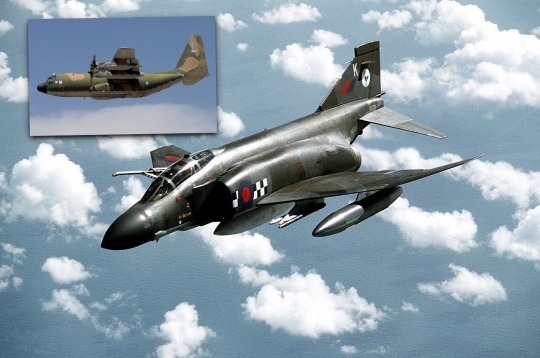
The story of the RAF Phantom who "asked" for refueling in flight of a KC-130 from Argentina
Fernando Valduga By Fernando Valduga 20/08/2023 - 15:13 in History, Military
The F-4 Phantom formed an important part of the Royal Air Force (RAF) combat aircraft force for more than twenty years and provided the British service with one of the most capable attack fighters in the world. Once, a crew of an RAF Phantom, as a joke, asked for fuel from an Argentine Air Force KC-130 flying over the Falklands.
Two versions of the Phantom with a Rolls Royce Spey engine went into service in the Royal Air Force. The FG1 (the version also used by the Royal Navy) in the role of interceptor and the FGR2 in the ground attack and in the tactical reconnaissance role in Germany.
From 1977, all the Phantoms of the British Royal Air Force were used ALMOST exclusively as interceptor fighters in the airspace of the United Kingdom.

The following story titled "Surprise" appeared in Richard Pike's book, "Phantom Boys Volume 2".
"With the potential, as they say, to shoot in the foot, there was irony and surprise in the situation. But there it was, an important day, a day of new beginnings, a day of 1993 that was recorded in many diaries. When the colonel himself entered the crew room - a colonel who turned out to be big, mustachioed, exuberant - a sudden silence fell on the room. When squadron leader Archie Liggat, as commanding officer of Squadron 234, a unit of tactical weapons and advanced training in the RAF Valley in Anglesey, stepped forward, shook the colonel's hand and said: "May I introduce some of my employees and students, sir..." And as Archie went through the subtleties, he was aware that each move of his was under the scrutiny "Good weather, isn't it?" routines, he felt, deep down, the pressure of secondary agendas. Perhaps he fed thoughts that, despite the demonstration of joviality, the colonel could be hard, petty and selfish - not that Archie had anything against the subject personally, only that, given the circumstances, it was difficult not to feel more than a little confused by the process. And few would argue that the procedures were, to say the least, quite unusual.
It was three years earlier, on a day in October 1990, when Archie was a Phantom pilot based in the Falkland Islands, that the scenario was set up for the remarkable reunion that would take place, totally by chance, during the colonel's visit to Valley. On the one hand, it was by chance that Archie, along with his colleagues, was on rapid reaction alert service (QRA) on that specific day in the Falklands. The men were prepared to react, if necessary, while waiting in a special crew room next to a hangar with two fully armed Phantom FGR2s. On the day in question, Archie and his colleagues were informed of a special request from the Argentine government regarding a large section of Antarctic ice, part of the renowned Wilkins ice shelf, which detached and was adrift in the South Atlantic seas. The Wilkins ice shelf, evidently stable for most of the 20th century, began to fragment. Concerned about the effects of global warming, scientific researchers from Argentina were eager to make detailed observations of the air.

As the aircraft to be used for these observations, a Lockheed C-130 Hercules operated by the Argentine Air Force (Fuerza Aerea Argentina or FAA), had limited range, the Argentines requested permission to fly over the Falkland Inner Conservation and Management Zone (FICZ). As this would be the first flight of this type by an FAA aircraft after the 1982 war, the subject was controversial. However, the UK government agreed to the flight on the condition that the C-130, when crossing the FICZ, was accompanied by two RAF Phantoms. To deal with language difficulties, Spanish-speaking air traffic controllers would be available at the Phantom base at RAF Mount Pleasant in East Falkland.
This is how the two QRA Phantoms took off that spring day in the Falklands to intercept, identify and escort the Argentine aircraft. The plan worked as planned and did not take long for Archie, as a pilot of the first QRA aircraft, to maintain the training on the left side of the C-130. When in position, he noticed that the Argentine aircraft, in addition to camouflage insignia and paint, was similar to the RAF C-130s of flight 1312 based at Mount Pleasant. The latter was modified to offer an in-flight refueling facility that the Phantoms occasionally used. While Archie and his navigator made a sentry on the left side of the Argentine, the other Phantom pilot maneuvered judiciously while his navigator took pictures. The Phantom crews did not make radio contact with the Argentine opposing numbers, although some polite nods occurred from time to time. With the C-130's cruising speed of less than 300 knots, the progress through the FICZ seemed, after a while, slow - in fact, strangely slow, actually tedious to the point that Archie started to get quite bored.
Possibly, at that point, Archie's thoughts may have wandered in different directions, including, perhaps, mental images of home, of his birthplace in Grantown-on-Spey, in the Scottish Highlands ... Suddenly, Archie had an idea; an idea he discussed with his navigator, which seemed quite amused with the absurd proposition. During the training, they discovered that the escorted aircraft was one of the two FAA KC-130s, a type of Hercules based on the U.S. Marine Corps variant used for in-flight refueling. Archie decided to accelerate his two levers to reposition the Phantom; he wanted to be fully visible to the Argentine cockpit crew. He then lowered his left hand of the two levers to the fuel panel below. With his eyes still watching Hercules, Archie's fingers carefully groped the switch of the in-flight refueling probe. The distinct shape of this switch was promptly identified. Now, when he operated the switch, Archie and his navigator heard the typical thuds and noises that indicated the movement of his flight refueling probe. When the device, normally leveled with the fuselage by the cockpit, left its housing, the movement signaled a standard silent procedural message interpreted by the aviators as: "I would like some fuel, please!"
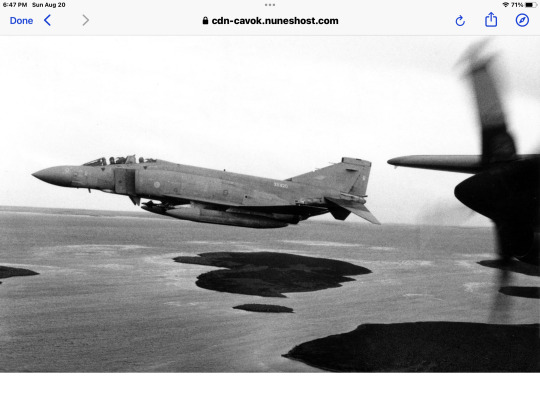
The response of the Hercules cockpit crew was immediate: the heads of both pilots turned to look at their escort. Meanwhile, several other crew members, with interrogative facial expressions, began to crowd against the side windows. The replica could be imagined:
“They're crazy!”
"How can we deal with these people?"
“They must be stressed!”
"It's a stratagem."
"No, it's just a joke. Let's play together. With this, one of the Hercules men smiled at the Phantom crew and made a positive sign. Thus encouraged, Archie maneuvered backwards to adopt the standard "waiting" position of replenishment. After a moment or two, to his astonishment, Hercules' refueling basket took a slight turn before starting to emerge from the hose drum unit. As the fuel line slowly stretched, Archie followed her back and began to move to a refueling position. At this juncture, however, the captain of Hercules must have decided that the prank had already gone too far: the hose bumped until it stopped, stopped and then was quickly rolled back into his accommodation. Archie has now eased his levers forward to resume his previous position in the Hercules cockpit. When he was there, he briefly lowered the oxygen mask to make an exaggeratedly taciturn expression. The reaction of Hercules' crew was intriguing: even more faces appeared on the side windows, all with wide smiles. Some shook their heads from side to side and shook their fingers as if they were a mischievous student.
Meanwhile, the captain of Hercules raised his cup of coffee in greeting, a sign that Archie interpreted as "no resentment". He therefore retracted his refueling probe and maintained a slightly broader formation as if indicating: 'Okay. It's agreed!' For the next hour, Archie maintained this position as the formation flew on the planned course that took the aircraft directly over the Mount Pleasant airfield and then towards the eastern limit of the FICZ. When there, Archie complied with the internationally agreed signal 'you are free to proceed' before giving a cheerful nod and moving sharply to the left as he headed back to Mount Pleasant.

After landing, Archie and the other crew members were duly informed by intelligence officers who asked adequately intelligent questions. As usual, there were forms to fill out, documents to sign, do this and that to ensure a satisfactory bureaucratic progression, but in a short time, in the hustle and bustle of a hectic life, the incident began to retreat to the back of Archie's mind. In fact, three years passed before memory was awakened, three years during which he moved from Leuchars to the 74º Squadron at the RAF Wattisham in Suffolk, where, among other functions, he was the acrobatic exhibition pilot of the Phantom - the last type in the RAF. In the fall of 1992, coinciding with the transition from RAF Wattisham to the Army Air Corps, he was assigned to the RAF Valley as commanding officer of the 234º Squadron, a training unit whose motto 'ignem mortemque despuimus' may have instilled a sense of admiration in the student body. (especially when they learned the meaning - 'we
***
Perhaps this motto was also appropriate when issues related to Argentina arose, although, as it has been about ten years since the Falklands War, efforts were underway to normalize relations. As part of this process, a new Argentine air attaché was appointed, a colonel who was being introduced to staff at several Royal Air Force stations throughout the country, including RAF Valley. With the choice of Squadron 234 as one of the units to be visited, on the day in question employees and students lined up to receive their important guest. To greet the colonel, the officers' cafeteria had provided tea with adequate tea cups, cutlery, fine cookies, sandwiches, buttoons and everything.
When the colonel finally arrived, he turned out to be a great man, of an exuberant nature, who seemed to go well with a mustache that could have made the legendary 'Biggles' proud. To accompany the colonel, elegantly uniformed members of the aeronautical attaché's team were accompanied by a group of senior officers of the Royal Air Force. In contrast, Archie and his men wore their normal day-to-day flight suits. When Archie made the appropriate presentations, he was relieved to see that the colonel was an affable guy who talked freely with everyone present. Perhaps it was even more surprising, therefore, when the colonel suddenly stopped talking to look, stunned, at a badge he had just seen in Archie's flying costume. The badge, innocuous enough for Archie to think, revealed the achievement of 1,000 hours of flight in a Phantom.

"Have you ever been to the Falklands?" asked the colonel. An embarrassed silence came down over the room.
“Yes, sir. On several occasions," Archie said, "although we called the islands something else." He looked nervously around the room. Some of the top officers of the Royal Air Force made an ugly face in disapproval.
"On several occasions?"
“Yes. I was assigned to fly in Phantoms.
"Interesting," said the colonel. After a break, he continued: "In fact, I flew there myself."
"You?"
“In fact. That's... in a way.
"Sir?"
“It must have been about three years ago. I was aboard a C-130 that was allowed to fly over the Falklands — the first FAA aircraft to do so since the war. We had to be escorted by two Phantoms, one of whom pretended to need in-flight refueling from our C-130." The colonel laughed and continued: "It was all a joke, of course. But he broke the ice, so to speak, and the captain of the C-130 was willing to play together to a certain extent."
Immediately, Archie waved to one of his students, whispered a message that made the student run to come back after a moment or two with Archie's logbook. Sneaking hurriedly, Archie found a specific page with a loosely inserted photograph. He extracted the photograph and showed it to the colonel whose face, while studying the photo, seemed at first shocked, then confused, amused and surprised. "Is this you...?" said the colonel. "Yes, sir. I was on duty that day - I was the Phantom pilot who pretended to need refueling in flight."
“My God...” The colonel stared at Archie and then, in a spontaneous act, patted him on the shoulder, shook his hand vigorously and grabbed him in a bear hug. Now, in a growing spirit of munificence, the colonel rummaged through his pocket to take out a leather bag that contained a medal from the Argentine aviation academy. Without further ado, the colonel solemnly fixed the medal on Archie's flying costume before, with his mustache bristled with pride, took a step back and greeted our gallant protagonist.
With this, the conversation in the room resumed while poor Archie, while struggling to recover from the momentary vertigo induced by such extravagance, was relieved to see that the group of senior officers of the Royal Air Force now seemed a little less sad. Maybe Archie felt a little dizzy, taken by surprise by the bizarre and unplanned experience. Was it, however, totally unplanned? Reflecting, Archie concluded that the colonel seemed, in some way, pre-prepared. If not, why carry such a medal anyway? Certainly not at the chance of finding some random individual who instantly needed one?

Finally, when the colonel and his group made mention of leaving, he approached Archie to shake his hand warmly. “Goodbye, my friend. Please pay a visit to the Argentine air academy one day, huh?"
“Thank you, sir. That would be... Archie suddenly noticed the way the colonel was looking at him. When the colonel nodded and turned to leave, Archie got the clear impression that he knew all the time who Archie was. He could never be sure, of course, and as he watched the Argentine officer and his entourage leave, Archie realized that all that strange episode would have to remain one of life's little surprises.
Merely illustrative images
Source: The Aviation Geek Club
Tags: Military AviationFAA - Fuerza Aerea Argentina/Força Aérea ArgentinaFalklands/Malvinas WarHISTORYRAF - Royal Air Force/Royal Air Force
Sharing
tweet
Fernando Valduga
Fernando Valduga
Aviation photographer and pilot since 1992, has participated in several events and air operations, such as Cruzex, AirVenture, Daytona Airshow and FIDAE. He has works published in specialized aviation magazines in Brazil and abroad. Uses Canon equipment during his photographic work around the world of aviation.
Related news
HELICOPTERS
Fly the first Black Hawk for the Portuguese Air Force
19/08/2023 - 16:00
MILITARY
RAF and Boeing explore sustainable aviation opportunities in Poseidon maritime patrol aircraft
19/08/2023 - 13:00
BRAZILIAN AIR FORCE
FAB: 6º ETA performs first flight with all-female crew
19/08/2023 - 12:24
MILITARY
"Top Gun" School will modernize its F-16
18/08/2023 - 19:46
MILITARY
Czech Republic is in final negotiations for the purchase of F-35 aircraft
18/08/2023 - 18:14
HELICOPTERS
Belarusian forces receive first batch of Russian Mi-35 attack helicopters
18/08/2023 - 16:00
16 notes
·
View notes
Text
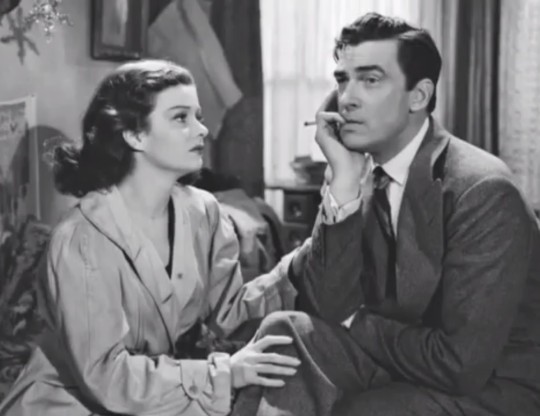
Joan Bennett and Walter PIdgeon in Man Hunt (Fritz Lang, 1941)
Cast: Walter Pidgeon, Joan Bennett, George Sanders, John Carradine, Roddy McDowall, Ludwig Stössel, Heather Thatcher, Frederick Worlock, Roger Imhof. Screenplay: Dudley Nichols, based on a novel by Geoffrey Household. Cinematography: Arthur C. Miller. Art direction: Richard Day, Wiard Ihnen. Film editing: Allen McNeil. Music: Alfred Newman.
Walter Pidgeon spent much of his movie career at MGM, playing prince consort to Greer Garson: He was Mr. Miniver, Mr. Parkington, and M. Curie -- they made nine films together, if you count their cameos as themselves in The Youngest Profession (Edward Buzzell, 1943). So it's interesting to see him on his own in a 20th Century-Fox film, playing an action hero, the big-game hunter Alan Thorndike, who nearly assassinates Hitler, is beaten by the Gestapo, gets pushed off a cliff and survives, escapes to a seaport where he boards a freighter for England, eludes his relentless pursuers, goes to ground in a cave, survives by killing his chief antagonist, and at the film's end parachutes into Germany, presumably to start it all over again. In fact, Pidgeon is a little too starchy for the role, which was better suited to someone like Errol Flynn or Tyrone Power, and he's upstaged (as who wasn't?) by George Sanders as the villain. Joan Bennett gives a nice performance as Jerry Stokes, the cockney "seamstress" (read: prostitute) who helps Thorndike escape. There's an entertaining scene in which Jerry encounters Thorndike's snooty sister-in-law, Lady Riseborough (Heather Thatcher). Roddy McDowall makes his American film debut as the cabin boy Vaner. This was the first of four films Bennett made with Fritz Lang as director, and they remain probably the highlights of her long career. Although Lang's American films never reached the heights of the ones he made in Germany, such as M (1931) and Metropolis (1927), he had a sure hand with the kind of suspense on display in Man Hunt. Dudley Nichols did the screenplay based on Geoffrey Household's novel Rogue Male.
14 notes
·
View notes
Text

There are many graphics and charts in this story that you might want to view - so click the header and visit the site directly to see them all
The history of Black people’s contributions to the catalog of inventions that marked the Industrial Revolution has been largely muted. This period is considered one of the most innovative eras in world history, seeing the birth of major advances in agriculture, transportation, communications, manufacturing, and electricity that fueled rapid economic growth. With the exception of a few notable inventors who are regularly elevated during Black History Month—e.g., George Washington Carver (peanut products) and Madam C. J. Walker (hair products)—the disregard of many of the era’s Black inventors not only whitewashes the historical record, but biases who we perceive to be innovators in the present.
Using a new database of inventors, this report demonstrates that Black contributions to the Industrial Revolution were influenced by the disproportionate number of Black Americans who lived in the U.S. South in the late 19th and early 20th century, where their opportunities to acquire and apply skills were severely limited by oppressive institutions. Still, Black Americans living outside the South invented nearly as frequently as white Americans, and at rates that would be considered extremely high by historic or global standards of invention even today. We use a novel database created by Sarada, Michael Andrews, and Nicolas Ziebarth that matches inventors listed on patent records in decennial years from 1870 to 1940 to complete census records, which include demographic information for the named inventors.1
The data reveals the following:
From 1870 to 1940, Black people living in the North were eight times more likely to be awarded a patent than Black people living in the South. White people in the North were three times more likely to invent a patented technology than white people in the South, but regional effects were weaker for white people and they were much less concentrated in the South than Black people.
In the North, Black people’s share of patents equaled their share of population. Black people accounted for 1.6% of the North’s population and 1.6% of patents across the decades studied. The rate of patenting per capita among northern Black and white residents was extremely high (0.31 per 1,000 residents for Black people and 0.39 for white people). Both of these rates exceed the U.S. rate of invention for most of the country’s history and approach the highest rates observed around the world today at the country level.2
With 50,000 total patents, Black people accounted for more inventions during this period than immigrants from every country except England and Germany. In our database, 87% of inventions were traced to people born in the United States, and 2.7% of the U.S. total were invented by Black Americans, which is a larger share than nearly every immigrant group. After accounting for patents during nondecennial years, we estimate that Black people accounted for just under 50,000 total patents during this period.
Given the vast differences between the North and South in providing both skill-generating and skill-using opportunities, this historical research points to the importance of linking political equality and social opportunity to innovation and economic growth. It also provides a reassessment and revaluation of the extraordinary contributions of Black people in the development of the United States as well as global technological advancements.
Back to top ⇑
Introduction
In leading theories of economic growth, technology and innovation are the driving forces of long-term gains in living standards.3 Ideas—developed and commercialized—are key to innovation, and economics literature has long recognized that patents offer a valuable measure of invention. Patents were particularly important during the so-called Golden Age of Invention (1870 to 1940), or the second phase of the Industrial Revolution, which was characterized by an unprecedented flowering of economic growth and advances in living standards.4 As historians have documented, people living in the United States contributed disproportionately to this rise.
It is widely believed that Black Americans did not participate in the Industrial Revolution, as suggested by several recently published papers.5 Likewise, contemporary estimates report that Black people are much less likely to become inventors than whites, Asian Americans, and immigrants.
Our estimates for total patents by Black people during the Golden Age of Invention are similar to those previously published. We use the same database as used in Sarada et al., but we emphasize the importance of regional differences and how legal and cultural institutions in the South were particularly harmful to Black people. In this way, we build on the research of economist Lisa Cook, who is the only scholar we know of who has systematically analyzed how Jim Crow laws suppressed invention among Black people.6 We extend her work by using a more comprehensive measure of inventors, one that links patent records to newly released digital data from the U.S. Census Bureau for relevant years during the 1870 to 1940 period.
Our conclusion supports the arguments developed in Jonathan Rothwell’s A Republic of Equals, which concluded that educational achievement, innovation, and entrepreneurship were widespread in the North’s Black community in the decades between the end of slavery and beginning of Jim Crow.7
Back to top ⇑
Methods
This article draws on a more detailed analysis from Jonathan Rothwell and Mike Andrews, recently published as a working academic paper. Interested readers should consult the methods section of that paper and see the discussion for further information.8
Patent records do not record the race of the inventor or other demographic information, other than their name and address. The key benefits of the Sarada, Andrews, and Ziebarth database is that it links these records to census data, unlocking valuable demographic information.
This database is extremely useful for comparing across groups of people and regions to understand where patented inventions came from and who developed the technologies. However, it is not a complete record of every patent developed during the period. Census records are not available for nondecennial years, and while many people identified in the decennial census would also be identified in interdecennial years, the fact that many would have changed addresses complicates direct matching.
Even during decennial years, matching a patent record to a census record is far from guaranteed. State and local geographies often use abbreviations or uncommon spellings. The name of the inventor may be abbreviated or misspelled. Overall, our database accounts for 19% of domestic patents for the relevant years, with nine years of missing data during each decade.
Because of these information gaps, we impute actual domestic utility patents from the U.S. Patent and Trademark Office to groups identified in our database using the group share for the relevant year and geography. For example, we find that 2.7% of all patents went to Black inventors, so a good estimate of the total number of inventions by Black inventors is .027 times the total number of recorded inventions of U.S. residents. In practice, the 2.7% share varies by year, so we assign the nearest decennial year estimate to the years in between to get a more precise estimate. A rule of thumb is that the number of patents observed in our database should be multiplied by 5.4 to account for missing matches, which we have reason to believe are largely random by group. The statistics below are careful to distinguish the estimated actual numbers from the lower numbers derived from the database.
Back to top ⇑
Findings
From 1870 to 1940, Black people living in the North were eight times more likely to be awarded a patent than Black people living in the South. White people in the North were three times more likely to invent a patented technology than white people in the South, but they were much less likely to live in the South than Black people.
White Americans were 4.6 times more likely to patent than Black Americans during the entire period of 1870 to 1940, as other scholars have documented. That rate fluctuated somewhat, but remained fairly constant. A superficial interpretation of this result is that Black Americans faced enduring obstacles throughout the country that resulted in consistently low rates of patenting.
However, underlying this pattern is the fact that during this period, Black Americans were born and raised mostly in the U.S. South, where the institutional environment was radically different with respect to both race and invention. The share of African Americans living in the South went from 90% in 1870 to 77% in 1940. Meanwhile, only one-quarter (26%) of white Americans lived in the South throughout the period. Despite the lopsided share of African Americans living in the South, northern African Americans filed the majority of patents (58% is the average for the entire period), with the North’s patenting share reaching 71% by 1940. Most patents filed by white Americans also came from northern residents (90%), reflecting regional differences in education and industrial concentrations.
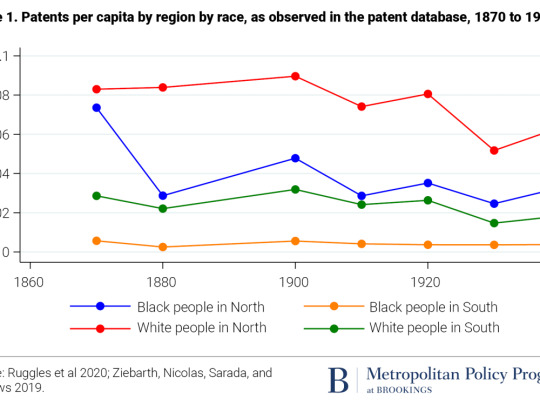
The data suggests these regional institutional differences explain quite a lot. Across the period, Black people living in northern U.S. states were eight times more likely to patent than Black people living in southern states (Figure 1). The regional gap for white inventors is also large, in that northern white people were three times more likely to patent than their southern counterparts—but that is only one-third as strong as the effect on Black invention. A simple interpretation of these facts is that poor social and economic resources (e.g., lack of education, research and development, and industry) limited invention in the South by a factor of three, whereas systemic racism had an even larger effect—albeit only on the Black population. Black people in the North were almost as likely to file a patent as white people in the North, and they were far more likely to patent than white people in the South.
To put in perspective the extraordinary number of patents given to Black people in the North in the decades after the end of slavery, consider that patenting in northern Black communities was equal to white Americans nationally. During this era, the United States was arguably the most inventive place on Earth at what was arguably the most inventive era in world history. This puts northern Black people in the global vanguard of invention in the late 19th and early 20th century.
We also considered what these patenting rates look like by region of birth. This distinction is important in analyzing the causes of different patenting rates by region. A state could be better at providing Black people learning opportunities, practice opportunities, or both. A state that provides only practice opportunities may provide no advantages to people born there, but may be a welcoming destination to highly skilled migrants.
The patenting rates by region of birth are largely consistent with patenting by region of residence. For both races, patenting rates are slightly higher by region of residence, consistent with there being both learning and practice opportunity effects in northern states. Whether using state of birth or residence, the broad regional distinctions are still evident, and the data is clear that northern Black patenting rates were high by either definition.
In the North, Black people’s share of patents equaled their share of population. Black people accounted for 1.6% of the North’s population and 1.6% of patents from 1870 to 1940. The rate of patenting per capita among northern Black and white residents was extremely high (0.31 per 1,000 residents for Black people and 0.39 for white people). Both of these rates exceed the U.S. rate of invention for most of the country’s history, and approach the highest rates observed around the world today at the country level.9
On average, Black patenting rates are lower than white patenting rates in the same state, but there are several notable exceptions (Table 2). In Washington, Maine, Colorado, Pennsylvania, and Indiana, both patenting by residents and patenting by those born in the state are higher for Black people than white people. In Wisconsin, Black patenting rates are roughly the same as white rates for residents, but Black patenting is much higher by birth—suggesting that Wisconsin provided especially advantageous learning opportunities. In New York, Michigan, and Ohio, patenting rates were essentially the same between Black and white people, whether by residence or birth.
In southern states, patenting is almost uniformly lower for white and Black people, but some of the within-race comparisons are instructive. In states with heavy historical slave populations—such as Alabama, South Carolina, Georgia, Mississippi, Texas, and Florida—patenting was much higher for Black people who were born there than patenting by residence. This suggests that these states were especially bad at providing practice opportunities, but many Black people born there achieved inventive success elsewhere after migrating.
Table 1. Patents per million population observed in the patent database by race and state of residence and birth, 1870 to 1940 (cumulative)Black peopleWhite people
State of residenceState of birth State of residenceState of birth
District of Columbia 201.5 140.7 491.6 300.4 Massachusetts 188.3 120.4 222.9 179.9 Washington 151.6 117.9 87.0 33.5 Maine 111.0 413.3 65.0 137.7 New York 100.9 96.7 98.0 97.1 Connecticut 100.6 96.7 293.7 223.9 Colorado 79.7 70.1 71.4 51.1 Delaware 74.7 63.0 174.5 114.3 Pennsylvania 59.1 67.9 49.3 52.5 California 58.7 25.6 84.9 53.7 New Jersey 57.9 57.0 219.3 121.6 Illinois 57.2 39.0 53.4 44.2 Maryland 50.9 51.7 133.0 115.7 Michigan 41.1 40.7 48.0 45.5 Ohio 36.4 46.4 45.5 50.9 Wisconsin 34.8 77.4 38.6 39.9 Indiana 30.4 45.7 26.8 36.3 Kansas 19.6 19.6 12.9 35.6 Utah 14.8 513.1 84.9 58.2 Minnesota 14.7 10.1 28.9 31.9 Missouri 13.2 13.5 24.5 29.2 Iowa 9.5 102.9 16.2 28.5 Oregon 7.5 16.1 81.3 49.0 Tennessee 6.5 11.8 11.8 14.2 Florida 6.3 8.3 29.5 23.3 Louisiana 6.1 5.8 25.9 23.7 Oklahoma 5.8 9.7 17.1 11.6 Kentucky 4.5 9.2 10.4 19.0 Alabama 2.8 5.3 10.3 13.2 Texas 1.9 2.4 7.6 9.4 South Carolina 1.6 6.1 15.4 21.0 Mississippi 1.4 4.8 8.9 11.4 Georgia 1.0 4.7 7.6 13.9 Arkansas 1.0 2.4 6.1 7.8 North Carolina 0.4 5.2 7.0 12.9 New Hampshire 0.0 501.4 78.4 184.9 Vermont 0.0 158.2 88.5 147.4 Nebraska 0.0 25.9 12.2 26.4 Idaho 0.0 0.0 42.1 19.9 North Dakota 0.0 0.0 19.0 20.0 Arizona 0.0 0.0 34.0 44.7 South Dakota 0.0 0.0 15.3 23.8 Wyoming 0.0 22.9 43.8 47.1 New Mexico 0.0 0.0 19.6 14.2 Nevada 0.0 0.0 73.5 79.6 West Virginia 0.0 7.8 1.1 13.1 Hawaii 0.0 0.0 18.3 23.8 Montana 0.0 0.0 0.0 36.7 Rhode Island 0.0 40.7 0.0 65.1 Virginia 0.0 20.9 0.0 31.5 Alaska 0.0 0.0 0.0 1097.7
To put these numbers in perspective, we can compare them to contemporary patent rates in America’s most prolific innovation hubs. To do so, we multiple by 5.4 to account for missing records. From 2007 to 2011, there were 296 patents granted per million residents of U.S. metropolitan areas, according to previous Brookings research.10 From 1870 to 1940, adjusted Black patenting rates exceeded 300 per million in 12 states.
Compared to other states and territories, Black residents of Washington, D.C. had the highest rate of patenting during this golden age, with 1,088 patents per million Black residents, after adjusting for missing data. This rate is roughly equal to contemporary San Francisco and Seattle, though somewhat lower than contemporary San Jose, Calif. In recent years (2007 to 2011), only 16 metropolitan areas exceeded the rate of patenting reached by Black residents in Washington, D.C. from 1870 to 1940.
Other Brookings research allows us to put this in an international perspective. We estimate that northern Black Americans had a rate of 300 patents per million residents, after adjusting for missing records. Japan was the only country in the world to patent at a higher rate from 2010 to 2012.11
With 50,000 total patents, Black people accounted for more inventions during this period than immigrants from every country except England and Germany. In our database, 87% of inventions were traced to people born in the United States, and 2.7% were invented by Black Americans—a larger share than nearly every immigrant group. After accounting for patents during nondecennial years, we estimate that Black people accounted for just under 50,000 total patents during this period.
It is widely known that immigrants to the United States contributed disproportionately to entrepreneurship and innovation, and continue to do so today. Yet it is also the case that during the Golden Age of Invention, most inventions (87%) came from people born in the United States. Black people were among the most important contributors to this, accounting for more patents than immigrants from any country except Germany and England.
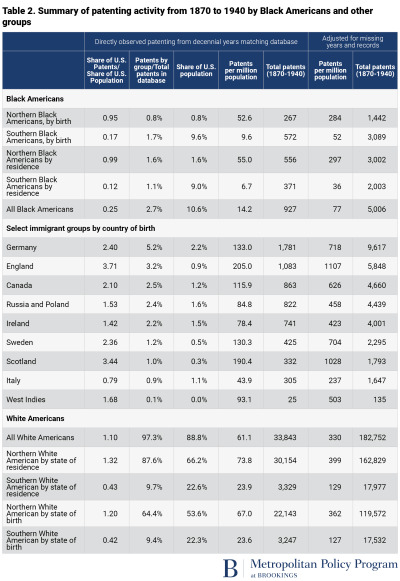
To understand the rate of patenting by northern Black Americans during this period, we compare it to the average rate of patenting throughout U.S. history. A few observations stand out (Figure 2).
First, the Golden Age truly was remarkable for its rate of innovation. No other time in the 19th or 20th century saw rates of patenting matched by the period from 1870 to 1940. In the late 20th and early 21st century, the introduction of software patents has contributed to the increase in patenting, along with much higher rates of postsecondary education and research and development spending per capita.12 Second, Black patenting by northern residents during this period should be considered extremely high relative to the national rate at any time in U.S. history. Simply put, from the period after the end of the Civil War to start of World War II, northern Black people were among the most inventive people in world history.
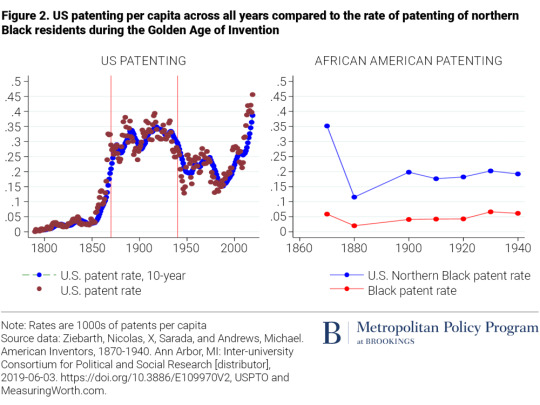
Back to top ⇑
Discussion
Perhaps the earliest and most ambitious attempt to measure the contribution of Black people to U.S. invention was made by Henry Baker, who worked at the U.S. Patent Office. In 1913, he surveyed approximately 8,000 registered patent attorneys, found 1,200 inventions attributed to people of African American ancestry, and was able to confirm 800 of them.13 He emphasized that this was a large undercount, as attorneys reported failing to recall the names or inventions of some of their Black clients. Our database suggests that Black people were producing roughly 800 patents per year during the decade of Baker’s work.
“We can never know the whole story,” Baker wrote in a 1913 pamphlet. “But we know enough to feel sure that if others knew the story even as we ourselves know it, it would present us in a somewhat different light to the judgment of our fellow men, and, perhaps, make for us a position of new importance in the industrial activities of our country.”
In this spirit, we follow Baker’s lead and describe some of the Black inventors who shaped the history of technology:
Lewis Latimer was born in Massachusetts in 1848 to escaped former slaves. He became a leading electronics engineer, making technical drawings for Alexander Graham Bell, contributing to the development of telephones, and later working for Thomas Edison on improvements to lighting.14
Elijah McCoy was also the son of African American parents who escaped slavery. He was born in Canada but raised in Michigan, before being sent to study in Scotland at age 15. McCoy was denied work as an engineer based on his race, and had to settle for work as a railway technician. In that context, he developed and patented an automated system for wheel lubrication, greatly improving the efficiency of train travel. He went on to have a lengthy career as an inventor.15
Granville Woods was another influential Black inventor of the era, born in Ohio in 1856. He made fundamental innovations to railways, especially in the form of communication systems and the distribution of electricity to the rail cars.16
Sarah Boone invented the ironing board, winning a patent in 1892. She was raised in New Haven, Conn. by African American parents who escaped from slavery in North Carolina through the Underground Railroad.17
Despite living and working in the North, these and other Black inventors, entrepreneurs, and workers of all kinds faced discrimination and professional and financial barriers that white people did not.18 Obtaining a patent was more difficult for Black people, because it often involved working with a white lawyer who may be tempted to engage in unfair dealings. These obstacles, no doubt, suppressed the wealth, fame, and influence of Black inventors—and yet, many succeeded in making important contributions to American technological and economic development. What is striking is that even while lacking complete liberty, Black people in the North acquired and practiced cutting-edge creativity, science, and technical skills at very high rates for a substantial period of U.S. history.
Several important institutions changed in the North that help explain why opportunities for Black advancement seem to have stalled and even reversed after the Golden Age of Invention. The 1920s saw the birth of zoning laws and other government-backed institutions that closed off real estate markets to Black people, leading to rapid increases in racial segregation which did not reach their peak until the 1970s.19 With racial segregation made either an explicit goal or viewed as an unavoidable side effect, governments around the country fostered segregation and corralled Black people into areas that were targeted for disinvestment in important public resources, including education.20 Meanwhile, powerful professional associations—including the American Bar Association and American Medical Association—gained prominence in the early 20th century and used their emerging power, in part, to officially discriminate against Black people for decades.
Throughout northern states, the Golden Age of Invention in America provided a tantalizing glimpse into what Black people could accomplish if given robust opportunities to learn and practice in highly skilled fields. These accomplishments negated the assumption—once held by many in America—that Black people cannot thrive just as well as any other group at the most challenging cognitive activities. National leaders should apply this historical lesson to today’s institutional landscape, and seek out and eliminate barriers to the full participation of Black people in American life.
#Black Innovators#Black Inventors#Black Industrial Revolution#The Black innovators who elevated the United States: Reassessing the Golden Age of Invention
14 notes
·
View notes
Text
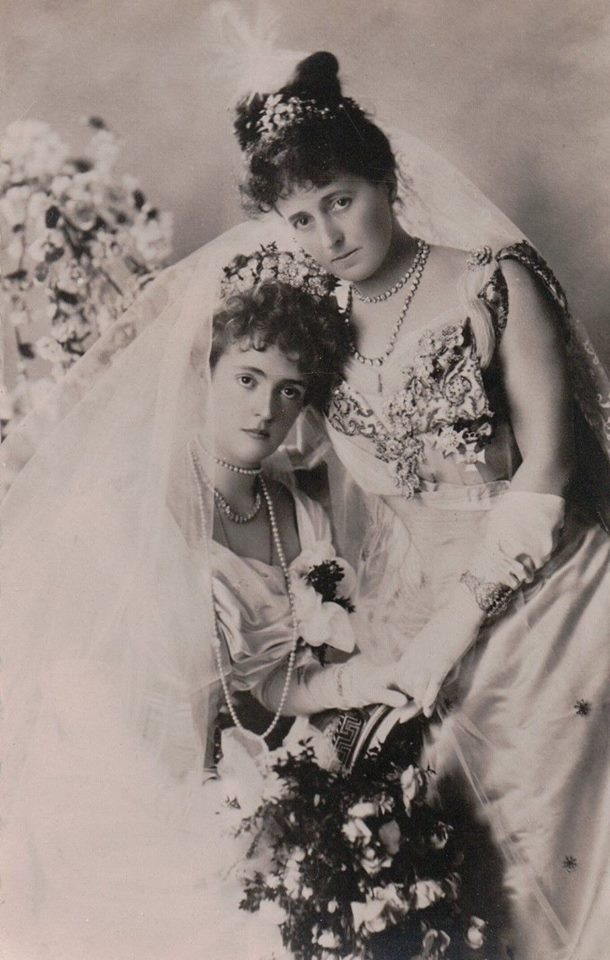
Duchess Marie Gabrielle of Bavaria on her wedding day, with her mother Duchess Marie-Jose in Bavaria, 1900
#wedding#20th century#mdpcostume#costume#20th c. costume#Photography#bavaria#Germany#20th c. Germany#1900#1900s
69 notes
·
View notes
Text

20th century
NISSAN
MOTORSPORTS 1958-2000
'80~
WEC championship,
And to participate in Le Mans
Group C flourishes.
In the early 1980s, the FIA (International Automobile Federation)
The rules and classification of competition vehicles were changed.
Group C vehicles that are racing sports cars
is not classified by displacement as in the past,
Only the total amount of fuel used is specified (good fuel consumption is essential);
What type of engine can you use if you clear this?
It is a challenge for manufacturers as they are willing to participate.
It has become a very important category. The same regulations apply from the following year.
The world championship match “WEC Japan” by Fujis
Since it started at Pedeway, Nissan also started
Developed a carbon engine and mounted it on a foreign chassis.
Start participating. As an extension of that, to the Le Mans 24 Hours.
Participated in the race, the first challenge was in 1986, and the best in 1990.
Although it became a fast machine and won pole position, unfortunately, the battle ends without victory. In the 80s-90s
Also in WSPC (World Sports Prototype Championship) he participated full-time and finished 3rd in the series in 1990.
At that time in the United States, a category similar to Group C, IMSA-GTP, which is a popular cars actively participate in the race, Nissan GTP ZX-T
He was the champion from 1988 to 1999.
Nissan has been in the WRC (World Rally Championship) for 7-8 years.
Although he was able to take second place in the series for three consecutive years, the new vehicle In the era of Group B (starting in 1983) and Group A (starting in 1988) after the regulations came into effect, they often played supporting roles. However, there are still marathon raids such as the Paris-Dakar Rally, and popularity in the United States.
At stadiums, off-road races, etc. that collect
Often achieved good results.
In Japan, in 1985, Group A vehicles began
The Japan Touring Car Championship has begun, and Skyline RS Turbo and GTS-R were part of the winning front. And boasts the strongest Group A machine
R32 Skyline GT-R appears.
On the other hand, the Saurus Cup, March one-make race, or an amateur with many Silvias and Pulsars.
Races for beginners were also widely held nationwide.
Also, the first F1GP race in Japan in 10 years will be held in 8 years.
It was held at Suzuka Circuit and has been held every year since then.
With the introduction of F1, there was a sudden F1 boom in Japan.
/The motorsports boom was ignited.
PIC CAPTIONS
Local Kenyan expert Shehkar Mehta and his beloved PA10 Violet achieved the feat of winning the Safari Rally four years in a row from 1979 to 1982. Among the many international rallies, the Safari Rally is far more demanding than the events held in Western Europe, and it became an ideal venue for Japanese cars to demonstrate their excellence.
_____________________________________________
The "Silhouette Formula" car, which was born in Germany in the late 1970s, is a heavily modified racing car that retains only a slight silhouette of the production car. It is equipped with a trendy turbocharger and captivates fans with its overwhelming straight-line speed. In Japan in the early 1980s, Skylines and Silvias spewed flames and raced around Fuji Speedway and other places. Its power is 570bhp
_____________________________________________
Group C competition, 1985 WEC Japan. More than 80,000 spectators packed into Fuji Speedway in heavy rain. The works Porsche 956 on the first row of the grid withdrew early, and Kazuyoshi Hoshino, driving the March B5G Nissan (No. 28) that qualified third, won the race, which was shortened to two hours due to bad weather. Although bad weather was on their side, it was the first time for a Nissan car and the first Japanese to win a world championship race.
5 notes
·
View notes
Text
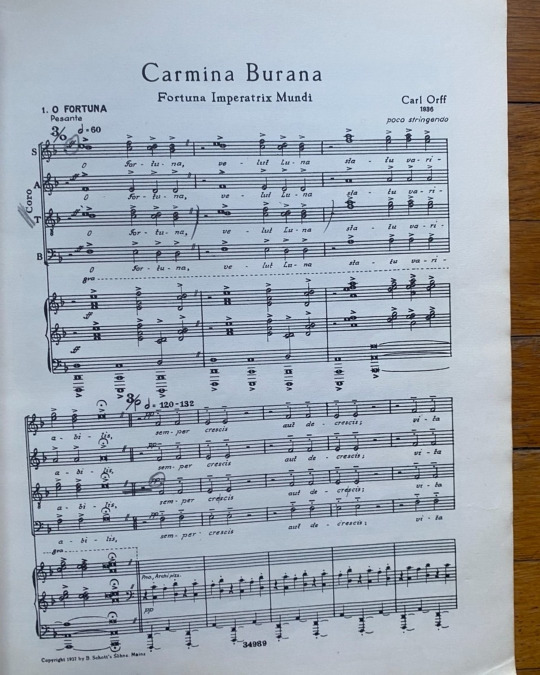


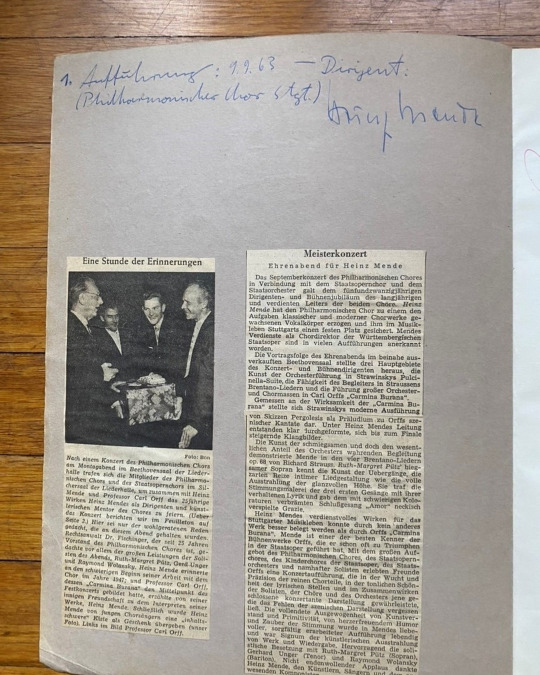


OTD in Music History: Composer and pedagogue Carl Orff (1895 - 1982) dies in Germany.
A member of "classical" music's ignominious "one hit wonder" club, Orff is remembered today for "Carmina Burana," a secular cantata composed in 1936 and premiered to the following year to great acclaim in Nazi Germany.
"Carmina Burana" was an immediate smash hit, and it has lost none of its popularity -- indeed, excerpts remain a ubiquitous feature of modern popular culture.
Based on poems from a medieval collection of the same name, the full Latin title of the work is actually "Carmina Burana: Cantiones profanae cantoribus et choris cantandae comitantibus instrumentis atque imaginibus magicis" ("Songs of Beuern: Secular songs for singers and choruses to be sung together with instruments and magical images"). Although originally written as a stand-along work, “Carmina Burana” is technically also part of a larger "musical triptych" entitled "Trionfi,” which also includes the cantatas "Catulli Carmina" (1943) and T"rionfo di Afrodite" (1951) – neither of which are regularly performed.
In a nod to the "Wheel of Fortune" that supposedly turns across time, both the first and last sections of "Carmina Burana" are entitled "Fortuna Imperatrix Mundi" ("Fortune, Empress of the World") and start with the words, "O Fortuna.” The work is structured in five major sections, and it contains 25 relatively short movements in total.
Musically speaking, "Carmina Burana" stands alone in the pantheon of 20th Century "classical" masterpieces -- Orff was strongly influenced by late Renaissance and early Baroque models including William Byrd (c. 1539 - 1625) and Claudio Monteverdi (1567 - 1643), and accordingly "Carmina Burana" contains little or no development in the traditional sense.
PICTURED: A printed score for "Carmina Burana" with a rather interesting history -- it is marked up and it was apparently used in a performance which took place under Orff's supervision in 1963. It has been signed by Orff, as well as several of the performers who were involved in that performance.
#Carmina Burana#cantata#O Fortuna#triptych#Carl Orff#Orff#composer#classical composer#Orff Schulwerk#Orff Approach#music#music education#teacher#pedagogue#music teacher#music history#classical studies#classical musicians#classical musician#symphony orchestra#orchestra#conductor#performance
14 notes
·
View notes
Text
Freud’s Last Session: what is Anthony Hopkins psychology drama about - when is AFI Fest premiere?
Anthony Hopkins and Matthew GoodE star in 2023 drama film Freud's Last Session
Freud’s Last Session is a film about the meeting of two great minds of the first half of the 20th century, founder of psychoanalysis Sigmund Freud, and fantasy author C.S. Lewis.
In the film the pair meet on 1 September 1939, the day that Germany invaded Poland, and two days before Britain enters the Second World War.
With Freud in the last weeks of his life, suffering from cancer of the jaw, he meets with Lewis, a promising Oxford don who was still more than a decade away from publishing The Chronicles of Narnia that would make him famous.
The pair spend hours debating the existence of God - Freud was a passionate atheist whilst Lewis converted from atheism to Christianity in 1931.
Freud’s Last Session will premiere at AFI Fest in Los Angeles this week before getting a cinematic release later in the year.

Anthony Hopkins and Matthew GoodE star in Freud's Last Session
Who is in the cast of Freud’s Last Session?
Anthony Hopkins as Sigmund Freud
Matthew GoodE as C. S. Lewis
Jodi Balfour as Dorothy Burlingham
Orla Brady as Janie Moore
Stephen Campbell Moore as JRR Tolkien
Liv Lisa Fries as Anna Freud
Rhys Mannion as Young C.S. Lewis
David Shields as Weldon
Pádraic Delaney as Warren Lewis
Tarek Bishara as Jacob Freud
George Andrew-Clarke as Paddy Moore
Gary Buckley as Albert Lewis
[Jeremy Northam as Dr. Ernest Jones]
When is Freud’s Last Session on at AFI Fest?
Freud’s Last Session will have its world premiere in room one of the TCL Chinese Theatre in Los Angeles during AFI Fest 2023. The screening will take place at 5pm on Friday 27 October.
When is Freud’s Last Session in cinemas?
The film will be released in cinemas in the US on 22 December 2023. A UK cinematic release date has not yet been confirmed.
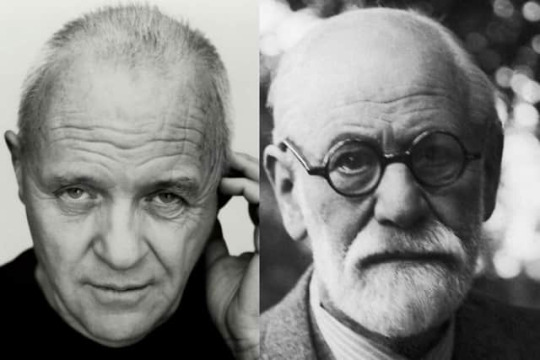
Anthony Hopkins plays Sigmund Freud in Freud's Last Sesion
Is Freud’s Last Session based on a book?
Yes, in a roundabout way. The film is based on a stage play of the same name by author Mark St. Germain, which was first performed in 2009.
The play is itself based on the 2003 book, The Question of God: C.S. Lewis and Sigmund Freud Debate God, Love, Sex, and the Meaning of Life, by Armand Nicholi. In his book Nicholi presents the letters and writings of each thinker regarding their views on God and religion, but does not include an actual meeting between the pair.
Is Freud’s Last Session a true story?
The film, and the play it is based on is not directly inspired by a true story. It is not known for certain whether Freud and C.S. Lewis ever met in person, though they were aware of each other.
Freud was visited by an Oxford professor in the last month of his life, but the identity of that person remains unknown - it was this meeting that inspired Germain’s play.
Whilst Freud and Lewis were both real figures, and their beliefs about religion, family, and other matters are accurately reflected in the film, the actual meeting between the pair is fictionalised.
# # #
Additional Photo: Entertainment Weekly

Matthew GoodE as C.S. Lewis (left) and C.S. Lewis (right). PATRICK REDMOND/SONY PICTURES CLASSICS; JOHN CHILLINGWORTH/PICTURE POST/HULTON ARCHIVE/GETTY IMAGES
#matthew goode#anthony hopkins#freud's last session movie#oscars 2014#sigmund freud#c s lewis#Clive Staples Lewis#freud's last session#freud's last session film#liv lisa fries#anna freud#jodi balfour#dorothy burlingham#goode performance#freud's last session cast#oscars buzz#oscars contenders#best actor#best supporting actor#jeremy northam#stephen campbell moore#j r r tolkien#david shield#orla brady#freud#stellar cast#fls cast#freudslastsession#coming soon#new movie
6 notes
·
View notes
Note
Hi Reid! wanted to ask you if you know of papers on (contemporary) archaeology research on recreational areas, as in the landscape thats created. Maybe specifically featuring lakes and minigolf in 2nd half 20th century? I’m looking into an area redesigned for recreation with a series of lakes and a pool and camping ground at a certain time and I doubt to be the first person to ever do that. If anything comes to your mind even vaguely relating to the topic, I’d be grateful to hear about it! :)
Hello, friend!
I'm not sure that I can get you stuff for things as specific as lakes and/or mini golf, but here are some things that might be worth looking into.
Jon Berndt Olsen, who studies tourism and leisure in Germany. Here's a link to his Google Scholar.
Bob Muckle, Canadian archaeologist who does some archaeology of tourism. Check out his google scholar and twitter.
Going Places: The Historical Archaeology of Travel and Tourism
Archaeology and Tourism: Touring the Past
From Nuisance to Nostalgia: The Historical Archaeology of Nature Tourism in Southern California, 1890–1940
Materializing Inequality: The Archaeology of Tourism Laborers in Turn-of-the-Century Los Angeles
Respectable Holidays: The Archaeology of Capitalism and Identities at the Crosbyside Hotel (c. 1870-1902) and Wiawaka Holiday House (mid-1910s-1929), Lake George, New York
Beside the Seaside. The Archaeology of the Twentieth-Century English Seaside Holiday Experience: A Phenomenological Context
Even if those articles don't directly apply to you, maybe try looking through their citations to see if there's anything good there.
-Reid
25 notes
·
View notes
Text

“Winged Orchid” pendant by Philippe Wolfers, c. 1902 (Hessisches Landesmuseum, Darmstadt, Germany)
One of the finest independent craftsmen working in the French style of Art Nouveau jewelry at the turn of the 20th century was actually Belgian. Philippe Wolfers.
12 notes
·
View notes